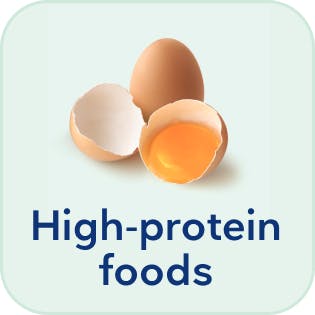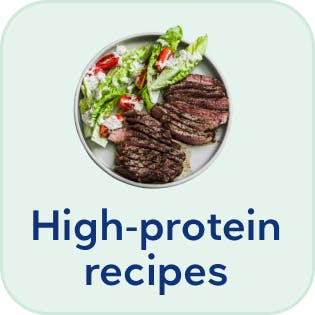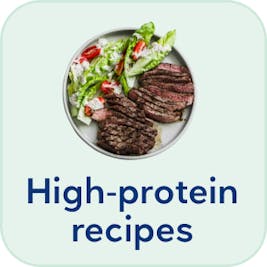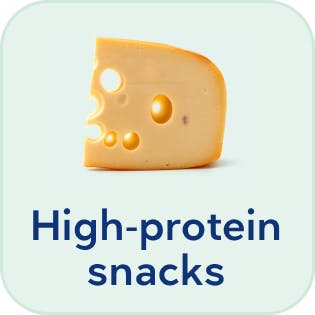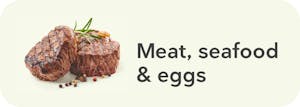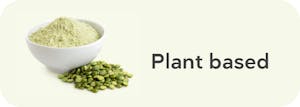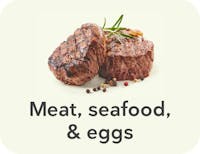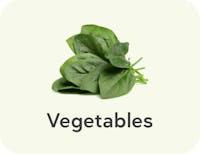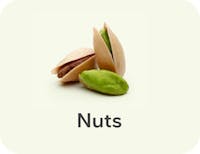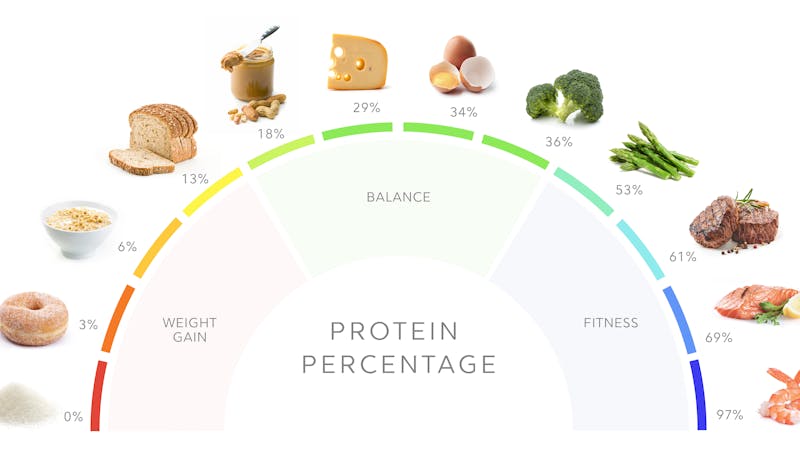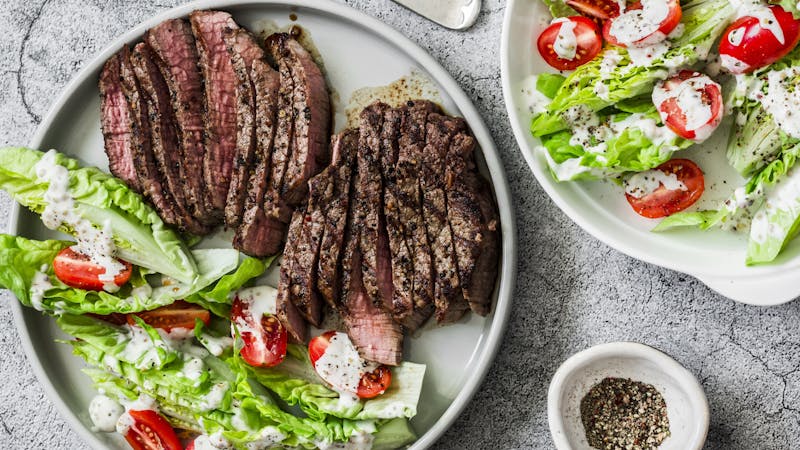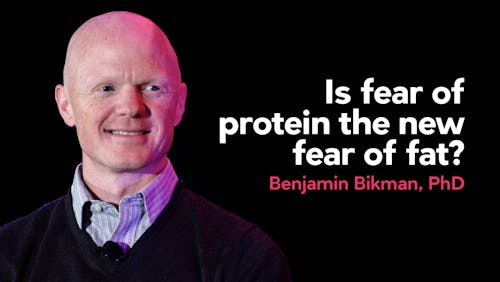The best high-protein dairy for weight loss
Are dairy products helpful or harmful for losing weight? It all depends on the types you choose. To lose weight effectively, eat high-protein, high-satiety dairy foods — the kinds that help you feel full and satisfied.
In this guide, we’ll show you which dairy products can help you achieve your health and weight loss goals. You’ll find out exactly what to eat, why it’s good for you, and what to look for when making dairy choices.
The image below shows the protein as a percentage of calories for different dairy products.The higher the number, the more protein the food provides per calorie.
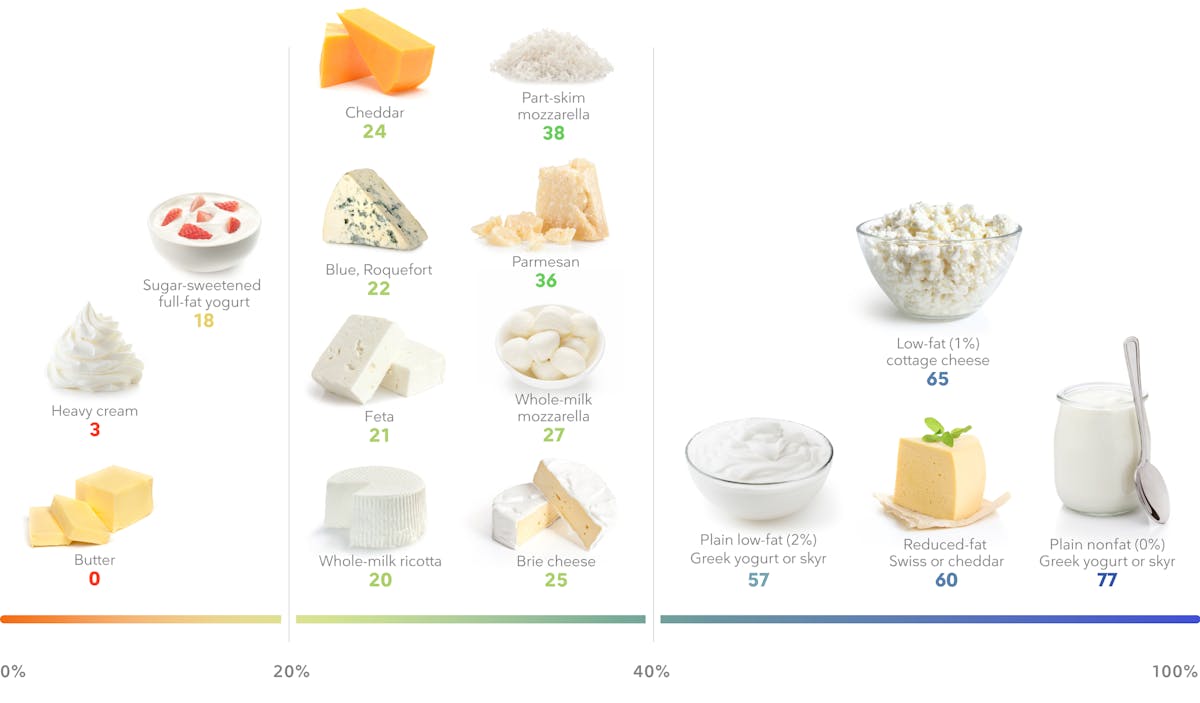


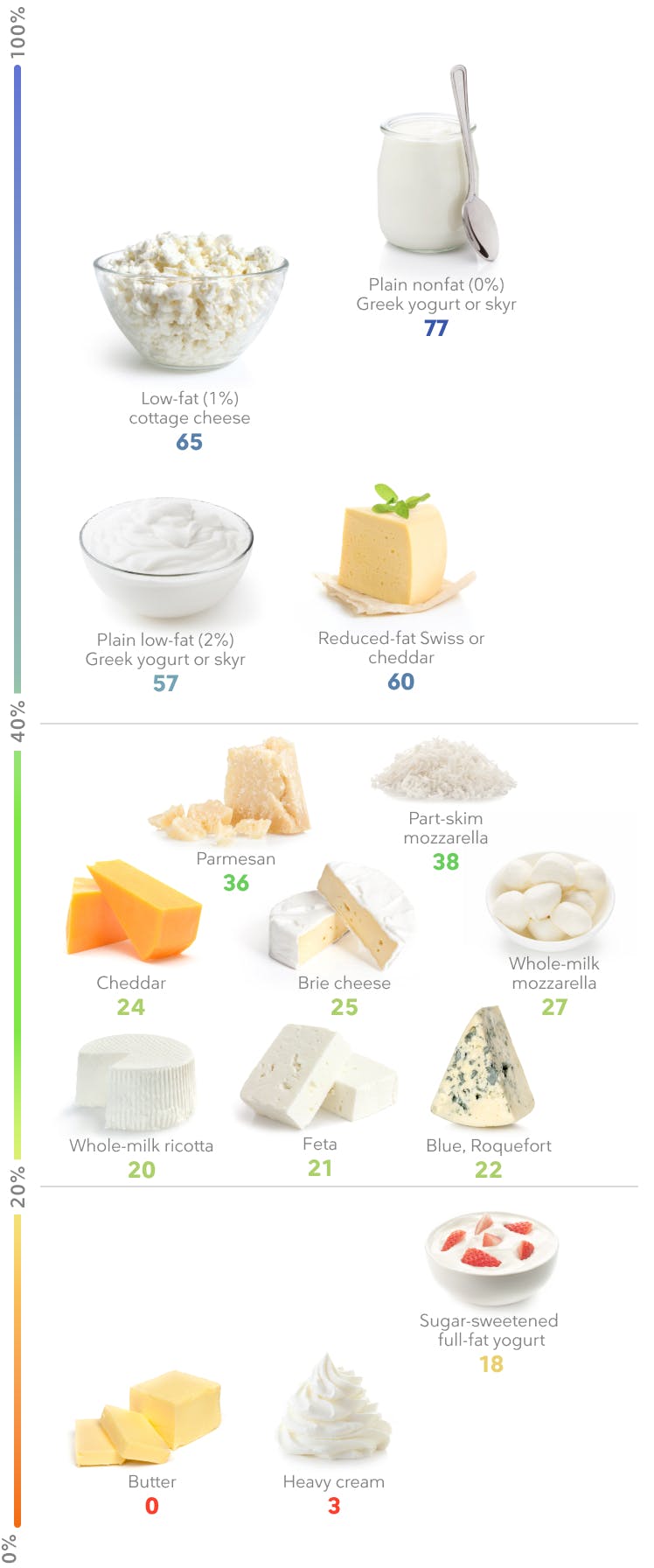


Key takeaways
Choose dairy foods with a high protein percentage. To lose weight without hunger, eat high-protein dairy foods that provide at least 35% of calories from protein. Learn moreMake plain yogurt and cottage cheese your go-to dairy choices. Eat unsweetened nonfat, low-fat, and full-fat yogurt and cottage cheese regularly. Learn more
Enjoy cheese, milk, and whey protein in smaller amounts. Learn which dairy products are best — and worst — for weight loss. Learn more
More high-protein guides
More high-protein guides
Alternatively, watch a summary of this guide where we discuss tips for choosing the BEST high-protein dairy products for healthy weight loss.
Protein percentage is key
Your body needs protein to survive and thrive. Of the three macronutrients — protein, carbohydrates (carbs), and fat — only protein is used for building muscle and making vital enzymes.
Eating plenty of protein — including from dairy sources — may help you feel full, slightly boost your metabolism, and improve your body composition.1
It’s true that many dairy products provide protein. But if you want to lose weight, the key is choosing dairy products with a high protein percentage. This percentage tells you how much of a food’s calories come from protein instead of fats and carbs.
For the best weight-loss results, try to choose foods with protein percentages of 35% or more most of the time.
Additionally, aim to eat at least 100 grams of protein per day if you’re a woman and 140 grams if you’re a man of average height and build. Eat more if you’re a man taller than 6 feet (183 cm) or a woman taller than 5 feet 6 inches (168 cm) or if you’re very physically active. Eat less if you’re shorter or have a petite frame.
While dairy can contribute to your daily goal, you should include other high-protein foods as well, such as meat, seafood, eggs, legumes, and vegetables.
This guide provides both the protein percentages and grams per serving for dairy products.2These are based on average values. The protein percentages and gram amounts can vary depending on processing, additives, and other factors. They can also differ slightly among brands.
1. Yogurt
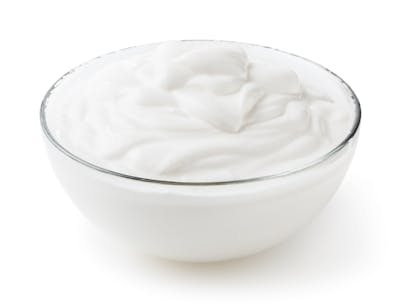



Plain nonfat Greek yogurt or skyr has the highest protein percentage. However, low-fat Greek yogurt is excellent, too. Full-fat Greek yogurt is also a decent choice. Since they’re all high in protein and low in carbs, feel free to eat the kind you like best.
What’s the worst option? Any sugar-sweetened yogurt — especially sweetened full-fat yogurt, which is high in both fat and sugar.
The list below provides standard information for different types of yogurt. But it’s a good idea to check labels for the protein content, since amounts can vary by brand. Also, look for added sugar — even in “plain” varieties — which decreases a yogurt’s protein percentage.
What are those percentages you see on Greek yogurt labels, such as 0%, 2%, or 5%? That’s the percentage of a yogurt’s weight — which includes water — that comes from fat. This is different from the percentage of a yogurt’s calories that come from fat. Only protein, fat, and carbs contain calories. And what is important is protein as a percentage of calories.
For instance, 47% of the calories in full-fat (5%) Greek yogurt come from fat. And 38% of its calories come from protein, as shown in the list below.
In addition to being weight-loss friendly, yogurt may be beneficial for bone health. Getting adequate calcium via dairy products like yogurt has been shown to reduce the risk of bone fractures.3
Below are the protein percentages and grams of protein and carbs per five-ounce (170-gram) serving of yogurt (about three-quarters of a cup).
- Plain nonfat (0%) Greek yogurt or skyr
Protein percentage: 77%
18 grams of protein and 5 grams of carbs per serving* - Plain low-fat (2%) Greek yogurt or skyr
Protein percentage: 57%
17 grams of protein and 5 grams of carbs per serving - Plain full-fat (5%) Greek yogurt or skyr
Protein percentage: 38%
16 grams of protein and 5 grams of carbs per serving - Plain triple cream (9%) Greek yogurt or skyr
Protein percentage: 23%
14 grams of protein and 8 grams of carbs per serving - Plain nonfat yogurt
Protein percentage: 43%
8 grams of protein and 11 grams of carbs per serving - Plain full-fat yogurt
Protein percentage: 23%
6 grams of protein and 8 grams of carbs per serving - Sugar-sweetened nonfat yogurt
Protein percentage: 20%
8 grams of protein and 32 grams of carbs per serving - Sugar-sweetened full-fat yogurt
Protein percentage: 18%
6 grams of protein and 16 grams of carbs per serving
*Protein and carb amounts of Greek yogurt vary among brands
2. Cottage cheese
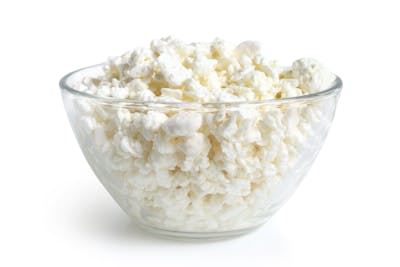



It’s made by adding acidic bacteria to milk, which creates curds that give cottage cheese its familiar lumpy appearance.
The good news is that almost all cottage cheese types — including those with more fat — have high protein percentages. The one exception? Cottage cheese with added fruit or sugar.
Just like yogurt, you’ll notice different percentages on cottage cheese containers, such as 1%, 2% or 4%. This is the percentage of the cottage cheese’s weight (which includes water) that comes from fat. The percentage of calories that come from fat is another matter.
For example, 25% of the calories in low-fat (2%) cottage cheese come from fat. And an impressive 58% of its calories come from protein, as shown in the list below.
Below are the protein percentages and grams of protein and carbs per four-ounce (113-gram) serving of cottage cheese (about one-half cup).
- Nonfat (0%) cottage cheese
Protein percentage: 69%
13 grams of protein and 5 grams of carbs per serving - Low-fat (1%) cottage cheese
Protein percentage: 65%
13 grams of protein and 5 grams of carbs per serving - Low-fat (2%) cottage cheese:
Protein percentage: 58%
13 grams of protein and 5 grams of carbs per serving - Regular (4%) cottage cheese
Protein percentage: 47%
13 grams of protein and 5 grams of carbs per serving - Cottage cheese with pineapple
Protein percentage: 31%
10 grams of protein and15 grams of carbs per serving
3. Cheese




For example, Swiss cheese is considered a high-protein cheese, but its protein percentage is only 27% because it contains a lot of fat.
Fortunately, some reduced-fat cheeses rank pretty high on the protein percentage scale.
Plus, there’s no need to avoid the higher-fat cheeses that you love! Just keep portion sizes small and have it occasionally if weight loss is your goal.
Below are the protein percentages and grams of protein and carbs per 2-ounce (60-gram) serving of cheese (about two slices or one-quarter cup):
- Reduced-fat cheeses (Swiss, cheddar, provolone)
Protein percentage: 60% (average)
14 to 16 grams of protein and 2 grams of carbs per serving (Read labels, as the amount of protein can vary among brands) - Part-skim mozzarella
Protein percentage: 39%
14 grams of protein and less than 1 gram of carbs per serving - Parmesan
Protein percentage: 36%
20 grams of protein and less than 2 gram of carbs per serving - Part-skim ricotta
Protein percentage: 33%
7 grams of protein and 3 grams of carbs per serving - Provolone
Protein percentage: 28%
14 grams of protein and less than 1 gram of carbs per serving - Whole-milk mozzarella
Protein percentage: 27%
12 grams of protein and less than 1 gram of carbs per serving - Swiss
Protein percentage: 27%
16 grams of protein and less than 1 gram of carbs per serving - Halloumi
Protein percentage: 25%
14 grams of protein and less than 1 gram of carbs per serving - Brie or Camembert
Protein percentage: 25%
12 grams of protein and less than 1 gram of carbs per serving - Cheddar
Protein percentage: 24%
14 grams of protein and less than 1 gram of carbs per serving - Blue, Roquefort
Protein percentage: 22%
12 grams of protein and less than 1 gram of carbs per serving - Feta
Protein percentage: 21%
8 grams of protein and less than 2 grams of carbs per serving - Whole-milk ricotta
Protein percentage: 20%
5 grams of protein and 5 grams of carbs per serving
4. Milk
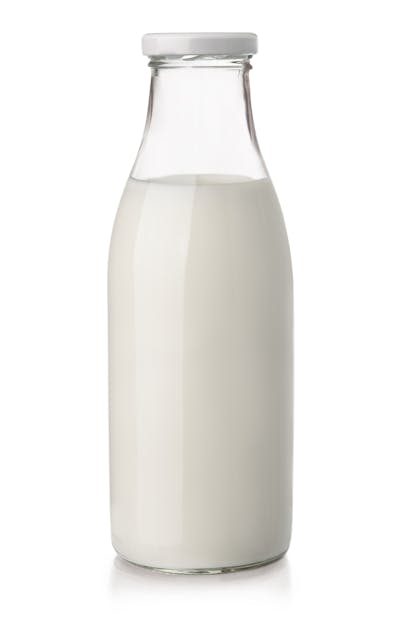



Unlike fermented dairy products, such as cheese and yogurt, milk contains a large amount of lactose (milk sugar), which dilutes its protein content and lowers its protein percentage. Whole milk is higher in both fat and carbs compared to protein, so it ranks near the bottom of the protein percentage list.
Like yogurt and cottage cheese, milk has different percentages on its labels: 1%, 2%, and 3.5%. This is the percentage of a milk’s weight (which is mainly water) that comes from fat.
Whole milk (3.5%) contains 48% fat as a percentage of calories. Only 21% of its calories come from protein, as shown in the list below.
High-protein, lower-carb milk is available in the US. But overall, although milk is fine in small amounts, it shouldn’t be a staple food — especially if you’re trying to lose weight.
What about cream? It contains almost no protein or other nutrients. Use it as needed to add fat and calories.
Below are the protein percentages and grams of protein and carbs per 8-ounce (240-ml) serving of milk (one cup):
- High-protein low-fat (1%) milk4
Protein percentage: 43%
13 grams of protein and 6 grams of carbs per serving - Nonfat milk
Protein percentage: 39%
8 grams of protein and 12 grams of carbs per serving - Low-fat (1%) buttermilk
Protein percentage: 33%
8 grams of protein and 12 grams of carbs per serving - Low-fat (1%) milk
Protein percentage: 31%
8 grams of protein and 12 grams of carbs per serving - Reduced-fat (2%) milk
Protein percentage: 26%
8 grams of protein and 12 grams of carbs per serving - Whole (3.5%) milk
Protein percentage: 21%
8 grams of protein and 12 grams of carbs per serving - Nonfat chocolate milk
Protein percentage: 21%
8 grams of protein and 28 grams of carbs per serving - Light cream
Protein percentage: 6%
0.5 grams of protein and 0.6 grams of carbs per serving (one tablespoon) - Heavy cream
Protein percentage: 3%
0.5 grams of protein and 0.5 grams of carbs per serving (one tablespoon)
5. Whey protein
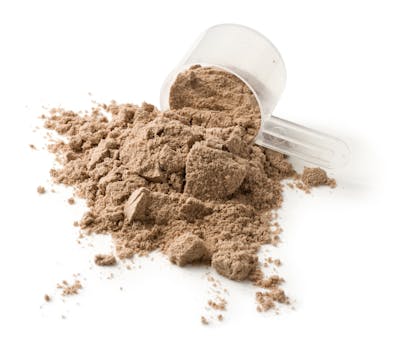



Gram for gram, whey protein contains considerably more protein than other dairy products. It’s also a convenient way to get a large protein dose quickly.
On the other hand, it’s a highly processed product rather than a minimally processed food.
We recommend eating high-protein dairy foods rather than whey protein most of the time.
However, if you find it challenging to meet your protein needs with food alone, supplementing with whey protein is fine. It is also a convenient way to add more protein to occasional treats like low-carb desserts, bread, and smoothies.
Choose unflavored whey protein powders or types sweetened with stevia or other sugar-free sweeteners.
Which is better: whey protein isolate or concentrate? Whey isolate undergoes further processing known as ultrafiltration, which removes more of the carbs and results in a higher protein percentage. But whey protein concentrate’s protein percentage is still impressive at 80%.
Stay away from weight gainer protein powder, though. You’ll get very little protein but a lot of carbs and calories.
Below are the protein percentages and grams of protein and carbs per 1-ounce (30-gram) serving of whey protein powder, except where noted:
- Whey protein isolate powder (plain or artificially sweetened)
Protein percentage: >90%
25 grams of protein and 1 gram of carbs per serving - Whey protein concentrate powder (plain or artificially sweetened)
Protein percentage: 80%
25 grams of protein and 2 grams of carbs per serving - Sugar-sweetened whey protein isolate powder*
Protein percentage: 70%
25 grams of protein and 6 to 9 grams of carbs per serving - Sugar-sweetened whey protein concentrate powder
Protein percentage: 65%
25 grams of protein and 7 to 10 grams of carbs per serving - Weight-gainer protein powder
Protein percentage: 17%
13 grams of protein and 63 grams of carbs per serving (2.7 ounces/80 grams)
*Protein percentages of sweetened whey protein powders vary among brands
Learn more about protein
The best high-protein dairy for weight loss - the evidence
This guide is written by Franziska Spritzler, RD and was last updated on June 19, 2025. It was medically reviewed by Dr. Michael Tamber, MD on March 14, 2022.
The guide contains scientific references. You can find these in the notes throughout the text, and click the links to read the peer-reviewed scientific papers. When appropriate we include a grading of the strength of the evidence, with a link to our policy on this. Our evidence-based guides are updated at least once per year to reflect and reference the latest science on the topic.
All our evidence-based health guides are written or reviewed by medical doctors who are experts on the topic. To stay unbiased we show no ads, sell no physical products, and take no money from the industry. We're fully funded by the people, via an optional membership. Most information at Diet Doctor is free forever.
Read more about our policies and work with evidence-based guides, nutritional controversies, our editorial team, and our medical review board.
Should you find any inaccuracy in this guide, please email andreas@dietdoctor.com.
Journal of the American College of Nutrition 2004: The effects of high protein diets on thermogenesis, satiety and weight loss: a critical review [systematic review of randomized trials; strong evidence]
Nestlé Nutrition workshop series. Paediatric programme 2011: Milk proteins in the regulation of body weight, satiety, food intake and glycemia [overview article; ungraded]
Nutrition Reviews 2016: Effects of dietary protein intake on body composition changes after weight loss in older adults: a systematic review and meta-analysis [systematic review of randomized trials; strong evidence]
British Journal of Nutrition 2020: The effect of 12 weeks of euenergetic high-protein diet in regulating appetite and body composition of women with normal-weight obesity: a randomised controlled trial [randomized trial; moderate evidence] ↩
We obtained nutrition information from FoodData Central, the USDA’s nutrient profile database. For the few foods not listed in the USDA database, we calculated average values from other sources or used the nutrition information listed by the manufacturer. ↩
In a two-year randomized trial of more than 7,000 older adults living in residential care centers, those who consumed extra milk, yogurt, and cheese decreased their risk of all fractures by 33% and hip fractures by 46%:
The British Medical Journal 2021: Effect of dietary sources of calcium and protein on hip fractures and falls in older adults in residential care: cluster randomised controlled trial [randomized trial; moderate evidence] ↩
Fairlife is currently the only high protein, lower-carb milk brand in the US. ↩



